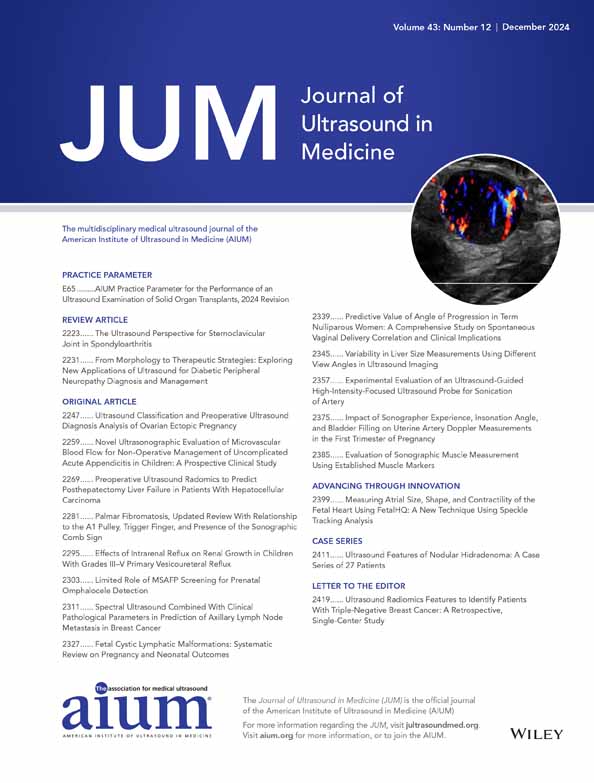Novel Ultrasonographic Evaluation of Microvascular Blood Flow for Non-Operative Management of Uncomplicated Acute Appendicitis in Children
A Prospective Clinical Study
We express our gratitude to the patients and their parents who participated in our study and to all the doctors and nurses of Ibaraki Children's Hospital.
The authors declare that they have no competing interests.
Abstract
Objectives
To determine whether superb microvascular imaging (SMI) provides a more precise delineation between reversible and irreversible stages of uncomplicated acute appendicitis managed non-operatively.
Methods
This prospective clinical study examined pediatric patients with acute appendicitis initially treated non-operatively and evaluated using power Doppler (PD) and SMI. We determined case severity, monitor appendiceal blood flow (BF), and appendicitis reversibility. Complicated cases were excluded. Severity was classified using B-mode as well as PD, or SMI: Grade I, smooth wall/normal BF; Grade IIa, irregular wall/increased BF; Grade IIb, irregular wall/decreased BF; and Grade III, absence of wall/loss of BF.
Results
This study examined a total of 100 patients with acute appendicitis, after excluding 29 patients. All 10 patients with normal BF on PD (Grade I) showed similar BF on SMI (Grade I). Among 29 patients with increased BF on PD (Grade IIa), corresponding increased BF was noted on SMI (Grade IIa), and all these patients showed full recovery. Of the 55 patients showing decreased BF on PD (Grade IIb), 52 showed increased BF on SMI (Grade IIa). The remaining three patients, identified with an impacted appendicolith, showed decreased BF on SMI (Grade IIb) and experienced treatment failure, subsequently developing abscesses. In all six patients with undetectable BF on PD (Grade III), SMI similarly could not detect appendiceal BF (Grade III), and non-operative management failed for these patients.
Conclusions
SMI offers an objective and effective means of delineating the threshold between reversible and irreversible stages in uncomplicated acute appendicitis following non-operative management.
Open Research
Data Availability Statement
The data that support the findings of this study are available on request from the corresponding author. The data are not publicly available due to privacy or ethical restrictions.




